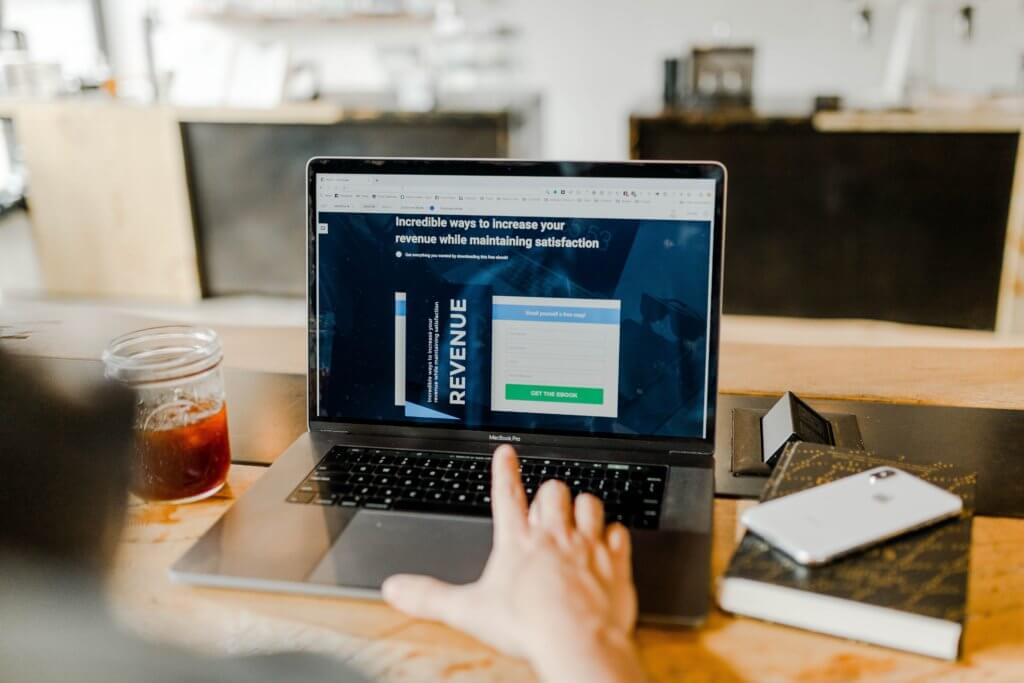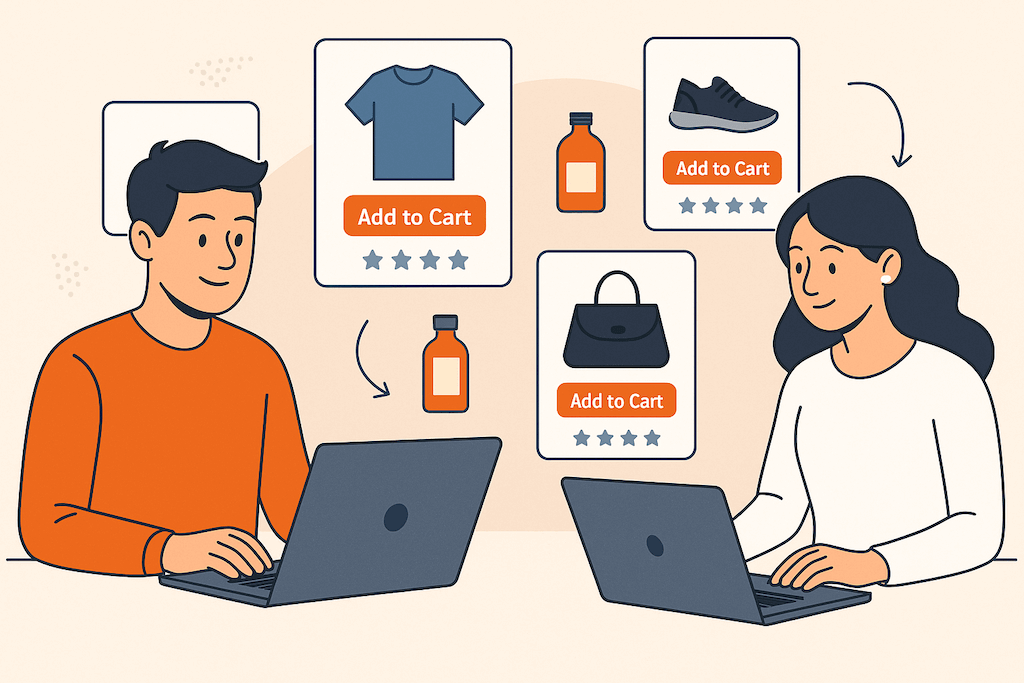eCommerce subscription websites have become increasingly popular in recent years, providing customers with convenience and flexibility in their shopping experience. However, as an eCommerce business owner, you may find yourself struggling to increase your average order value (AOV) and maximize your revenue potential.
Boosting your AOV is an essential strategy for improving profitability, and it can be achieved through various techniques, including upselling, cross-selling, bundling, and offering discounts. In this article, we will explore these tactics in detail and provide practical tips to help you enhance your AOV and drive your eCommerce subscription business’s success.
What is AOV and why is it Important?
AOV is the Average Order Value, or the average amount spent by a customer on your website per order. Increasing your AOV can have a significant impact on your bottom line. A higher AOV means that your customers are spending more, leading to increased revenue and profitability for your business. It can also reduce the cost of acquiring new customers, making it a crucial metric to focus on.
Strategies for Boosting AOV
Boosting the AOV of your customers is a continuous effort that requires attention and calibration. To execute it well, below are strategies you can implement.
– Creating Urgency
Limited-time offers or discounts can encourage customers to purchase more items to take advantage of the deal before it expires. Using words like “today only”, “offer expires soon”, or adding countdown timers can create urgency for users to subscribe now.
– Setting up tiered pricing
Creating subscriptions at multiple price points targets different budgets as well as encourages users to gain more value at a higher price. For example, offering higher discounts or better inclusions as the tier level increases.
– Providing Better Value for Longer Lock-ins or Higher-Priced Subscriptions
Giving discounts or more value to clients who subscribe to annual plans or higher-priced subscriptions encourages them to spend more during the time of offer while locking in the sales for your business.
– Upselling and Cross-selling
Implementing targeted product suggestions throughout the customer journey to encourage the purchase of higher-value items or complementary products. This can be done by showing personalized product recommendations based on customers’ browsing history and purchase behavior.
– Implementing Minimum Order Threshold
Encouraging customers to reach a certain order value to receive a discount or free shipping can increase the AOV. Doing this incentivizes users when they spend more, resulting in higher basket value and profit for the business.
– Partnering with Relevant Businesses for Mutual Benefits
Having special or exclusive collaboration offerings can encourage users to spend more. For example, if you are a pet supply store, you can partner with a pet clinic to offer discounted grooming services when they avail of a specific product along with their subscription plan.
– Offering Bundling or Bulk Order Discounts
Providing discounts for bulk orders or creating product packages that include multiple items at a slightly discounted price can incentivize customers to subscribe to more plans or to higher-ticket subscription tiers.
– Implementing Loyalty Programs
Offering exclusive discounts or special offers to repeat customers to incentivize them to purchase more frequently or higher-value items. You can also opt to offer membership programs for a fee that can unlock exclusive deals and offers to entice them to spend more.
– Financing or Payment Plans
Offering financing options or payment plans can help customers afford higher-priced items, resulting in a higher AOV. Partnering with payment channels and offering financing plan options can aid users in purchasing within their means.
Each of the strategies above is broad and can be customized to make them work for your business. You can also mix and match different strategies to find the most suitable combination for your target audience.
Metrics to Measure the Increase of AOV and Optimization Strategies
To determine if your efforts for increasing your AOV are successful, here are metrics you can observe. Knowing which ones are performing and failing can help you calibrate the efforts you do to optimize your growth strategy.
Measuring average order value (AOV) is essential for eCommerce businesses, as it helps you understand how much revenue you are generating per transaction. Here are some of the most commonly used metrics to measure AOV and sample optimization strategies if these metrics are low for your business:
Average order value
This is the simplest way to calculate AOV. You just need to divide your total revenue by the number of orders you received during a specific period.
Analyzing the average order value is important for businesses as it provides insights into the purchasing habits of their customers and can help identify ways to increase revenue. By understanding this metric, businesses can develop strategies to encourage customers to spend more on each order, such as offering product bundles or incentives for larger orders. Tracking changes in AOV over time can also help businesses evaluate the success of their marketing and sales tactics.
Optimization strategies:
- Offer a limited-time discount or promotion to incentivize customers to place an order. For example, offer a 15% discount on the first purchase for new customers
- Invest in advertising and marketing efforts to attract more customers to the website. For example, run targeted ads on social media platforms to reach a wider audience.
- Analyze the website’s user experience and make improvements to ensure that it is easy for customers to navigate and complete a purchase.
Average order size
This metric takes into account the total number of items in each order. To calculate the average order size, divide the total number of items sold by the number of orders.
Monitoring the average order size can help businesses gain a better understanding of customer behavior and product demand. Tracking changes in average order size over time can help businesses evaluate the effectiveness of their sales and marketing strategies and identify any areas where a pricing or promotional tactic may need to be adjusted.
Optimization strategies:
- Offer product bundles or kits that include complementary items at a discounted price. For example, bundle a cleanser, toner, and moisturizer for a lower price than if purchased separately.
- Use upselling and cross-selling techniques to suggest related products that customers may be interested in purchasing. For example, if a customer purchases a dress, suggest shoes and accessories that match the dress.
- Offer free shipping on orders above a certain value to incentivize customers to add more items to their cart.
Revenue per customer
This metric tells you how much revenue each customer generates on average. To calculate revenue per customer, divide the total revenue by the number of unique customers during a specific period.
Revenue per customer is a useful metric for businesses to track because it helps you understand the value of each customer to your business. By analyzing this metric, businesses can identify the most valuable customers and develop strategies to retain and grow their relationships with their customers.
Optimization strategies:
- Implement a loyalty program that rewards customers for making larger purchases. For example, offer customers points for each dollar spent and allow them to redeem these points for discounts on future purchases.
- Use personalization techniques to offer product recommendations based on customers’ previous purchases or browsing history. For example, if a customer has previously purchased a skincare product, suggest other skincare products that may be of interest to them.
- Offer personalized promotions and discounts to customers based on their purchase history.
Average revenue per user (ARPU)
This metric tells you how much revenue you generate per user on average. To calculate ARPU, divide the total revenue by the number of active subscribers during a specific period.
ARPU is commonly used for subscription-based businesses as it helps you understand the revenue per customer and identify areas where you can improve customer retention and increase revenue. ARPU can also be used to track changes in revenue over time, and to compare the performance of different customer segments or product lines. It is a key metric for companies looking to optimize their revenue streams and improve their bottom line.
Optimization strategies:
- Offer add-ons or customization options that customers can purchase in addition to their subscriptions. For example, offer the option to customize a monthly beauty box by selecting specific products or shades.
- Launch a referral program that rewards customers for referring their friends and family to subscribe. For example, offer customers a discount on their next subscription box for every successful referral.
- Analyze the subscription plans and pricing structure and make adjustments to encourage customers to upgrade to a higher-tier subscription plan.
Gross margin per order
This metric takes into account the cost of goods sold (COGS) and helps you understand your profit margins. To calculate the gross margin per order, subtract the COGS from the total revenue and divide the result by the number of orders.
By tracking the gross margin per order, businesses can identify which products or services are most profitable, and adjust their pricing or cost structures accordingly. It can also help businesses identify areas where they can reduce costs or increase efficiencies to improve overall profitability.
Optimization strategies:
- Negotiate better deals with suppliers to reduce the cost of goods sold and increase profit margins. For example, purchase larger quantities of products to receive a bulk discount.
- Implement a dynamic pricing strategy to adjust prices based on demand and inventory levels. For example, increase prices for popular products during peak seasons or decrease prices for slow-moving products to clear inventory.
- Analyze the business’s operational costs and make adjustments to reduce expenses and improve profitability. For example, renegotiate contracts with service providers or optimize the supply chain to reduce shipping costs.
By monitoring these metrics, you can gain valuable insights into your eCommerce subscription business’s performance and identify areas for improvement.
Increasing AOV can significantly impact your eCommerce business’s profitability. By implementing the strategies discussed in this article, you can encourage your customers to purchase more items per order, increasing revenue and improving customer lifetime value.
As a full-service web design agency Cultura Interactive specializes in eCommerce subscription; we understand the importance of Conversion Rate Optimization to get your clients to subscribe. We leverage data to optimize your online storefront so you can increase your conversion rates and drive growth for your business.
Shopify and WooCommerce have recently vetted our organization as a company that upholds their high standards for their clients. Let us take yours to the next level by contacting us today for a free consultation.



